When we think about the painting style of Pointillism (where one creates pictures through interlinking dots of paint rather than longer brushstrokes) the first artist who usually comes to mind is usually Georges Seurat - best known for his iconic works like Bathers at Asnieres.
But while Seurat in his tragically short lifetime certainly earned his renown as “The father of Pointillism” - there is another artist who really deserves our attention as one of the founding figures too.
A man from Ghent in Belgium, who began his career with rather subdued impressionistic portraits . . . but would later become Pointillism’s other greatest proponent.
Theo van Rysselberghe
Theo was a gifted artist from a young age, exhibiting works in the prestigious “Salon” in his home city while still only a teenager.
He was also a keen traveller, making regular trips throughout the years to his beloved “spiritual home” in Morocco.
But, even more so, he was a voracious student of his craft- relentlessly studying the work of Frans Hals and other old masters, in order to assimilate their ideals into his own artistic vision.
And as we can see with some of his rather haunting early works below, Theo was definitely on to something here!
By his early twenties, he was well on his way to equalling the style of his old master heroes.
Yet, over the course of his career, he became closely associated with many more contemporary painters too - with the likes of Auguste Rodin, Paul Signac, and John Singer Sargent all being in his extended friendship group.
And in 1886, shortly after falling in love with the works of Claude Monet and Auguste Renoir during his first exposure to an Impressionist exhibition - Theo underwent and enormous shift in direction with his work!
His colours became lighter and more vivid.
His aesthetic ideals moved beyond traditional realism.
And, as we can see, he became utterly infatuated with the complex pointillism of Georges Seurat - the man who’s work was currently being labelled by critics as “incomprehensible gibberish applied to the noble art of painting".
Thus, Theo returned to Belgium with the idea of “importing” Seurat’s style to his own country.
He knew full well that this style of painting would shock audiences wherever it was displayed.
But make no mistake, Theo’s own brand of pointillism was never meant to be simply a carbon copy of what he had seen with Seurat in Paris.
Rather, this was a case of creative integration - i.e taking the Frenchman’s inspiration, and then running with it to see what more could be achieved with this new balance of impressionist and Pointillist methods.
If Seurat had not sadly passed away at such a young age in 1891 - I have no doubt the two men would have gone on to collaborate on work or exhibit together at some point.
But at least with Theo - whose career went on for another thirty years, until his own death in 1926 - we can see that pointillism certainly remained in safe hands.
Bonus Story
P.s. Incidentally, there is one other interesting story from the life of Theo van Rysselberghe which I couldn’t resist sharing here. But, as it deals more with the artist’s influence rather than the work itself - it felt right to only include it as a little bonus feature today.
You see, in 1889 when Theo was in Paris, he happened to make the acquaintance with a rather famous namesake - the art dealer Theo Van Gogh.
And the two men hit it off immediately, due to having remarkably similar tastes in Art. But of course, after a short time in each other’s company, the subject inevitably arose of the art dealer’s brother Vincent (who was living in an asylum in Saint-Remy at the time).
Van Gogh mentioned how he wanted his brother to exhibit somewhere outside of France, to a “more open minded audience”.
And having had a private view of a few works - van Rysselsberghe agreed to help his new friend get some of his brother’s work in the upcoming “Les XX” exhibition - in Brussels. (Generally an invitation only event!)
Thus, a few months later, this chance meeting between the two Theos resulted in five of Vincent’s work being sent off Belgium- the first time Vincent’s work was shown publicly (beyond Theo himself exhibiting it in Paris!).
And, while some of the pieces received rather a mixed response, it was actually this same exhibition which led to the sale of a piece called “The Red Vineyard” . . . the only painting Vincent ever sold in his lifetime!

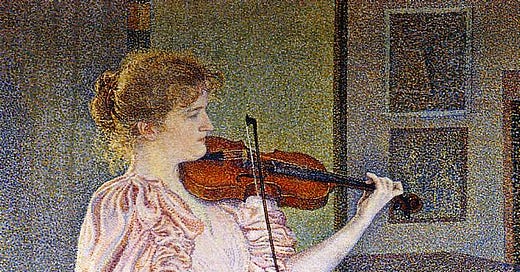



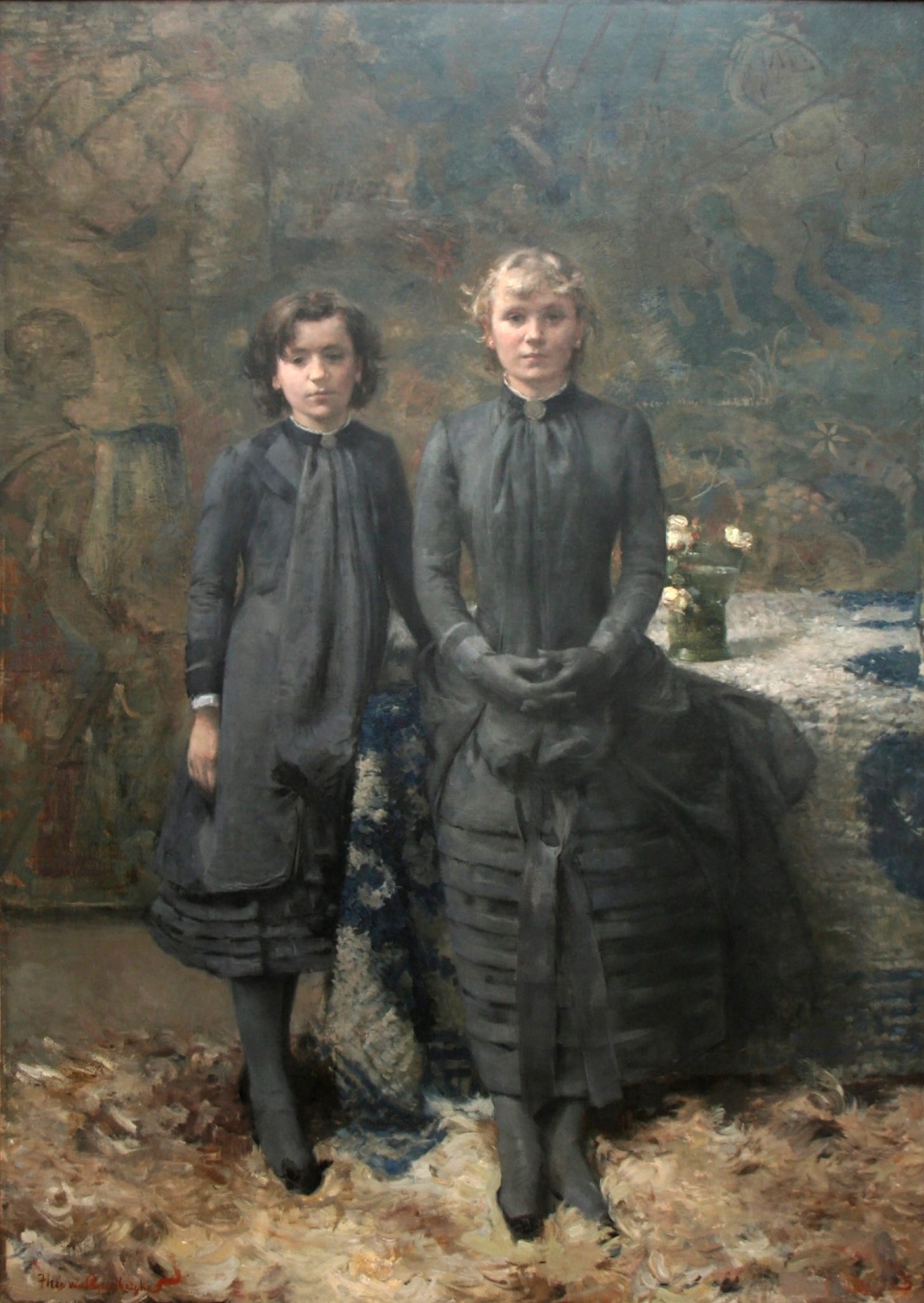
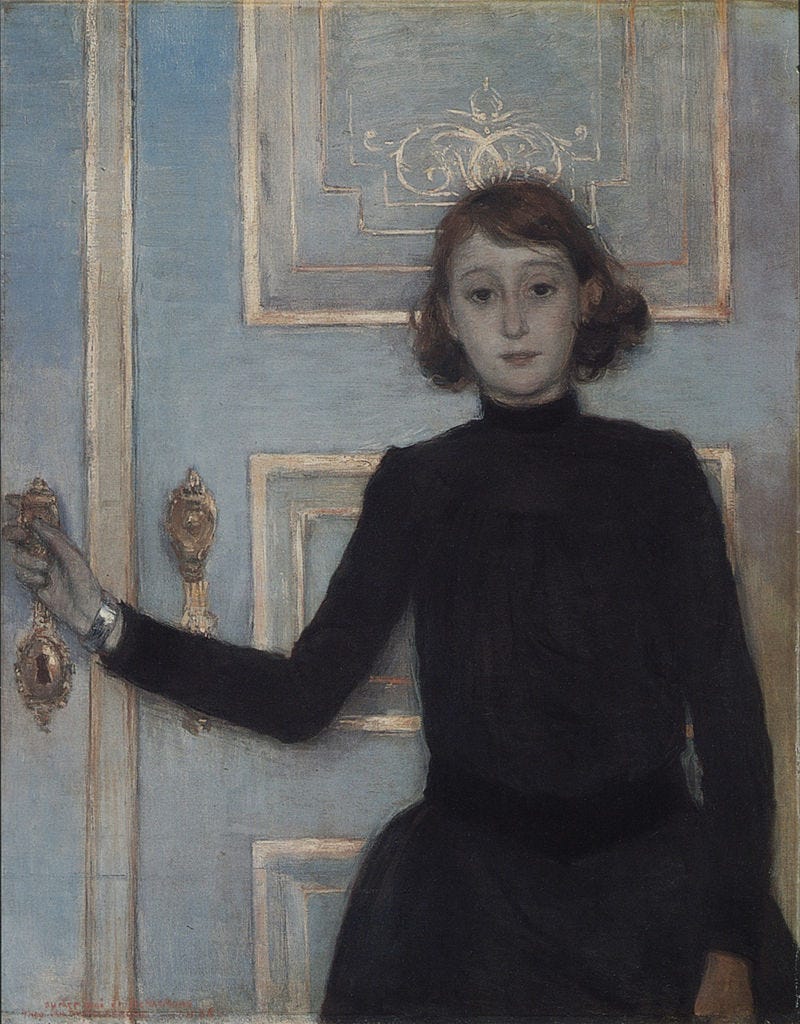


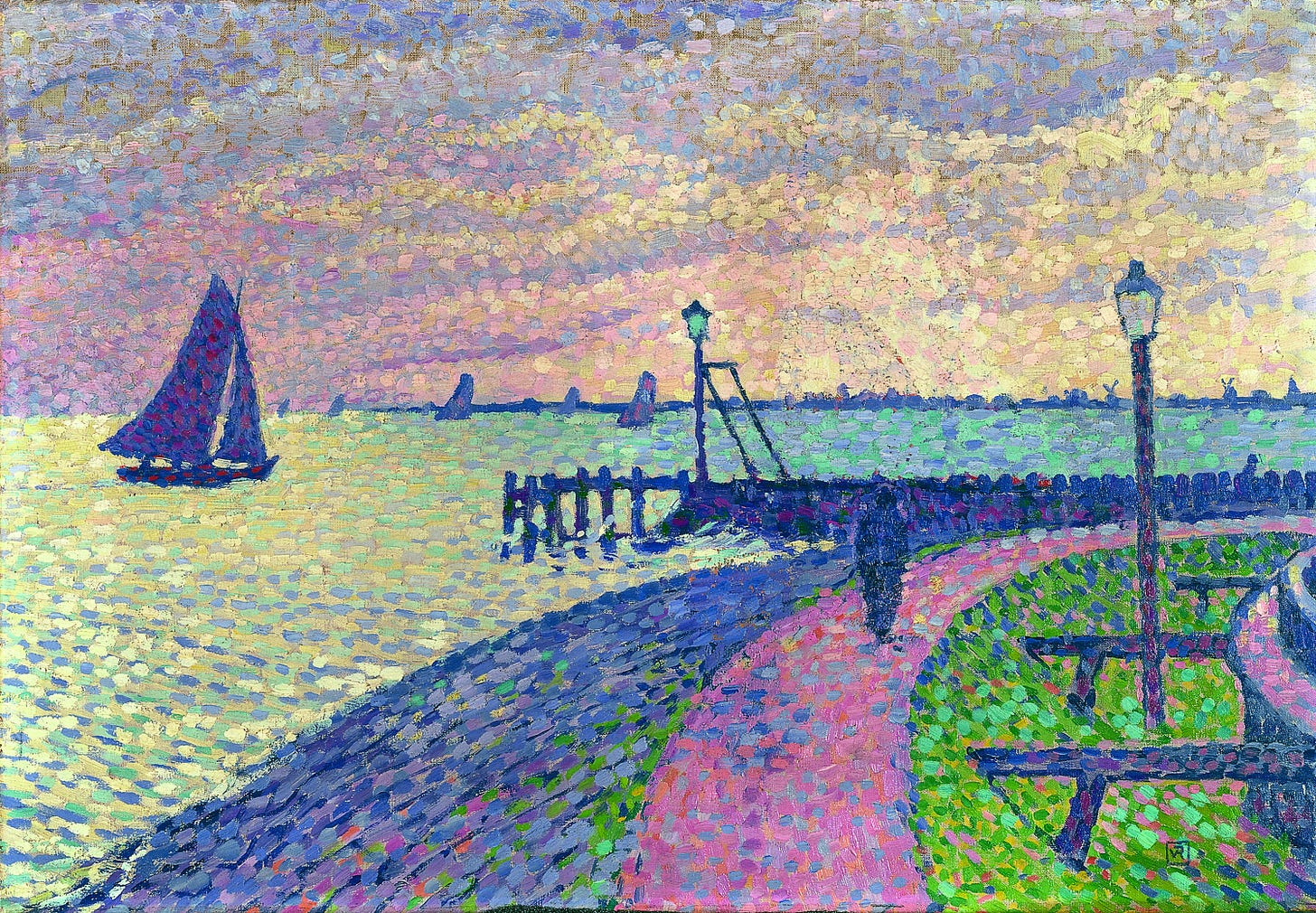
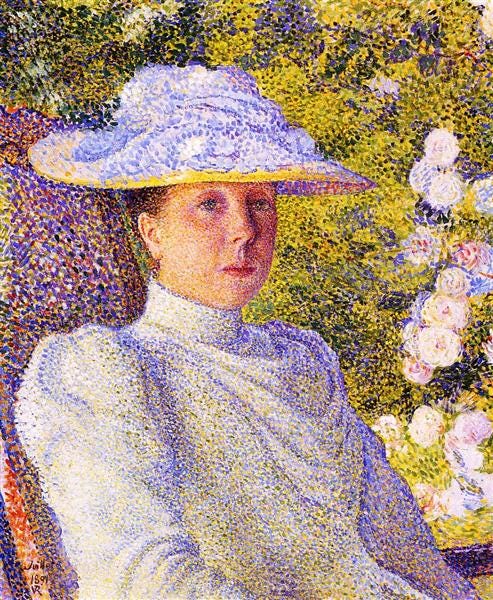

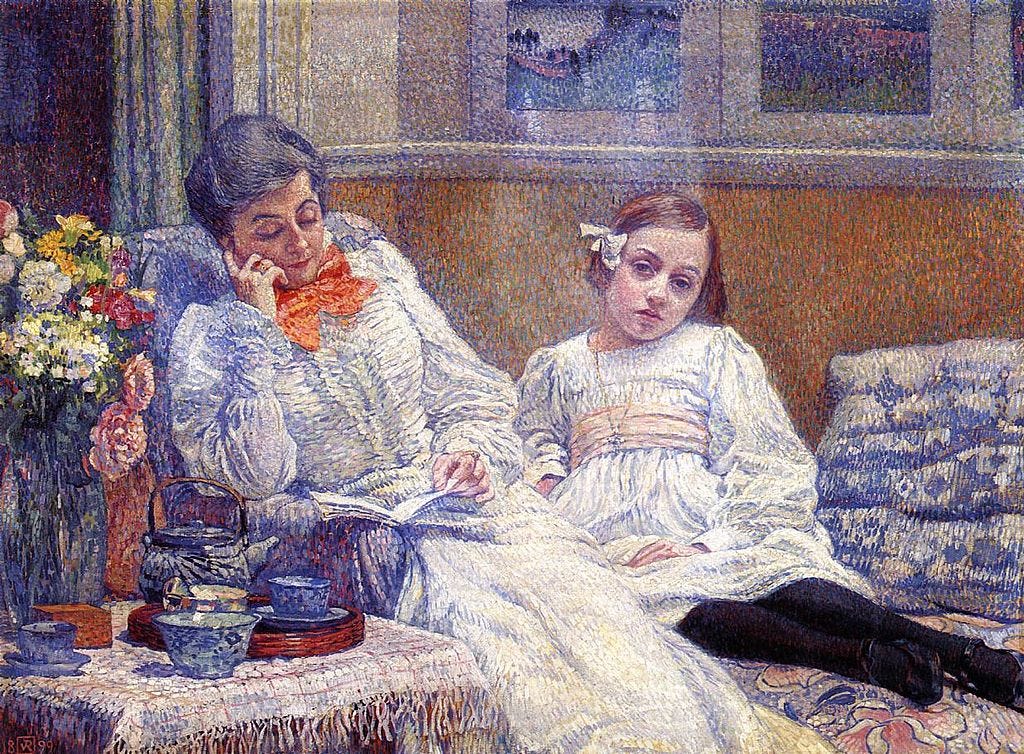

Yet again another really interesting article, I’m so pleased with this subscription without doubt my favourite, it never disappoints.
I actually prefer Theo's flavor of pointillism over Seurat's. I always found Seurat's work a bit sterile, but there are more varied moods and greater vibrancy in van Rysselberghe's work. Thanks for introducing me to another great artist I've never come across before!